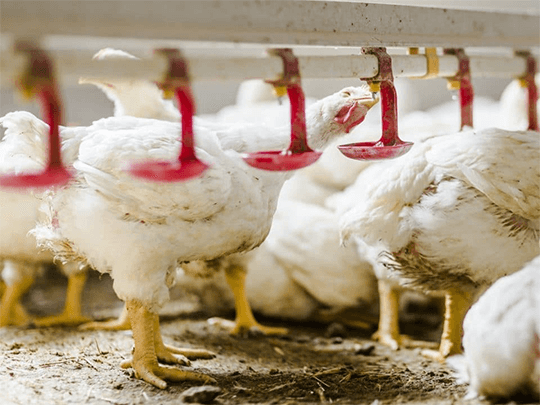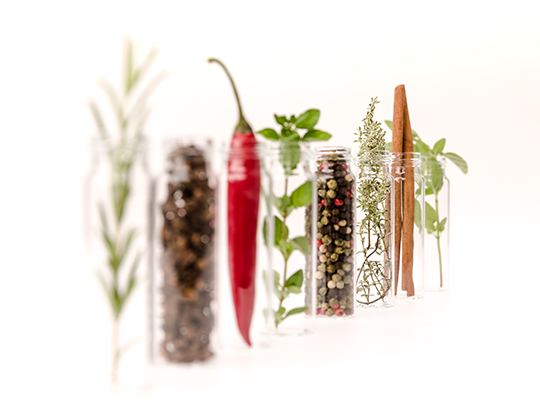What is the effect of heat stress in monogastrics? (Part 1)
Summer gives its best and everyone knows from experience that performance decreases with increasing heat. While we can make ourselves more comfortable using air conditioning or reaching out for some ice cream, this options are not available for our livestock animals… What about phytogenics offer support under heat stress conditions?
Summer gives its best and everyone knows from experience that performance decreases with increasing heat.
While we can make ourselves more comfortable using air conditioning or reaching out for some ice cream, this options are not available for our livestock animals.
Therefore we need to support them, with herbs and spices being an opportunity to help which can be added to their feed.
This first part of the article answers the questions...
- …what are the results of heat stress in livestock production?
- …what effects does heat stress have on the intestine?
- …how can phytogenics offer support in heat stress conditions?

Although at first glance the subject sounds absurd, but heat stress – the physiological response of the animal to these climatic conditions – is a serious problem:
This challenging condition occurs during heat waves, or in countries with high temperatures and especially high humidity is worsening the situation.
Did you know?
Heat stress is one of the main causes of economic losses in livestock production.
The negative effects of high heat and humidity are not only restricted to the physiology of the animals.

For example, a hot and humid climate also affects the quality of feed, particularly regarding soilage.
In addition, changes in environmental conditions such as temperature may allow vectors to spread to new regions. Consequently, new pathogens might be introduced that were previously not present in an area.
Livestock producers therefore have to rely on strategies to reduce the negative impact of heat stress to prevent economic losses.
Did you know?
Due to climate change Asian Tiger Mosquitos are now found in the middle of Europe, with potential risk of bringing dangerous diseases like dengue fever with them?
Sweat and lack of appetite
At high temperatures, animals change their behavior in order not to let their body temperature rise or to transport excess heat to the outside. Generally all species eat less, drink more and rest more often during heat stress periods.
But unlike us, most species are not able to sweat. Therefore they need to rely on other strategies such as panting or, if possible, take a wonderfully cooling mud bath as pigs like to do.
But adapting their metabolism to counteract high temperatures comes at a cost, and that can be seen in the reduced productivity of heat stressed animals: Reduced feed intake, lower daily weight gains, poorer product quality (meat, eggs and milk) and increased morbidity and mortality.
What effects does heat stress have on the intestine?
Heat stress shows several different negative effects on the intestinal tract and it’s barrier function between environment and the body. During heat stress, this barrier becomes more permeable, with oxidative stress being an important factor in this effect.
Consequently, the intestine can no longer reliably maintain its main functions to properly work on nutrient absorption and to prevent the entry of harmful substances and/or pathogens into the body. This results in a strong challenge both on health and growth performance.
An example for this problem can be observed when looking at the intestinal morphology.
The villus height and crypt depth – two key parameters for the efficient absorption of nutrients in the intestine – can change under heat stress. In brief, long villi and shallow crypts are advantageous for the animals. Several studies found in broilers and pigs a reduction of villi height under conditions of heat stress (e.g.Song et al., 2014; Pearce et al., 2015).

However, possibly depending on the type of heat stress, some studies also demonstrated no change on the villi (e.g. Burkholder et al., 2008). In these studies, impact on crypt depth was less clear with two out of three studies observing no changes and only Song et al. (2014) found an increase in crypt depth under heat stress conditions. These studies suggests however a negative impact of heat stress on nutrient absorption by impacting especially the villus height.
What kind of support can phytogenics offer under heat stress conditions?
Most livestock animals will suffer strongly during heat stress due to the reduced feed intake and stress put on their metabolism and health. Selected phytogenics have been shown to improve feed intake, therefore supplying more nutrients to the animal to maintain at least some of their normal performance.
In addition, antioxidant properties of specific phytogenic active substances can contribute to keeping the intestinal barrier function up to strengthen the animals’ resilience against heat stress.
We therefore might not be able to support all our animals with air conditioning or ice cream but adding phytogenics to their feed can contribute to alleviate the detrimental effects they have to endure during periods of heat stress.
References upon request

Anne Oberdorf
Anne has always been fascinated by the unknown, the diversity and beauty of nature. Her love for nature brought her to Delacon in 2018 after studying agricultural sciences, where she worked as Technical Communications Manager and later as Product Manager Aquaculture. Since February 2021, she has been taking a new, natural career path outside of Delacon.










